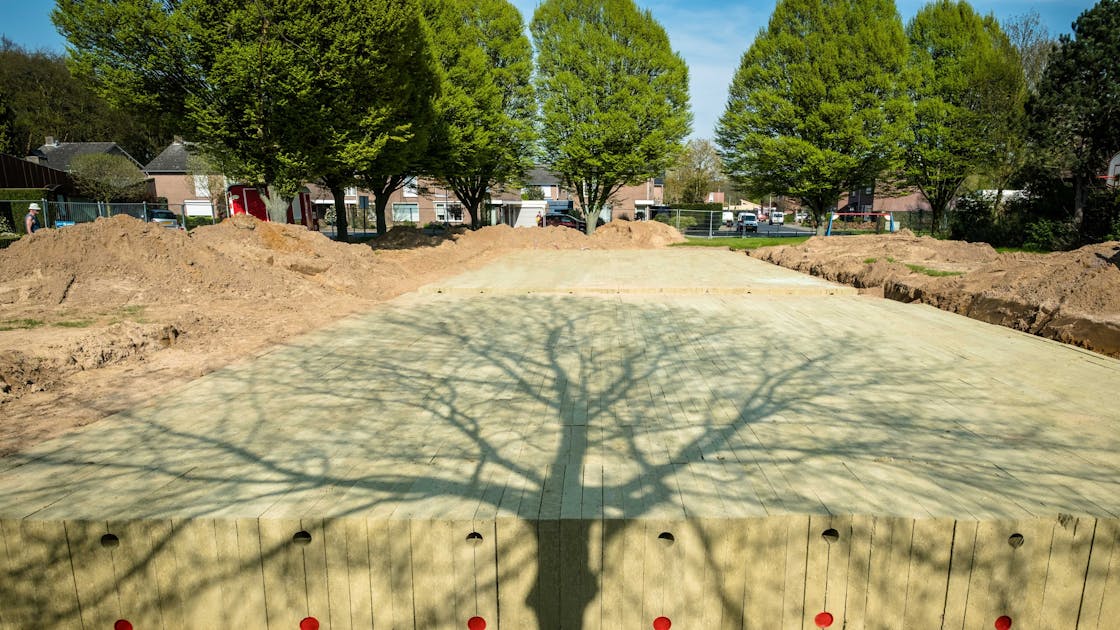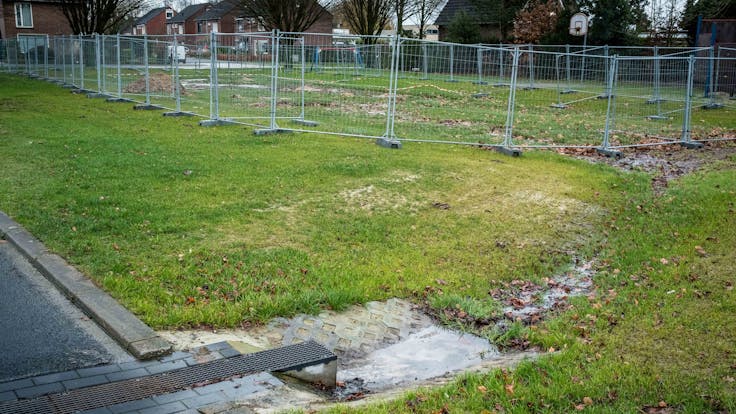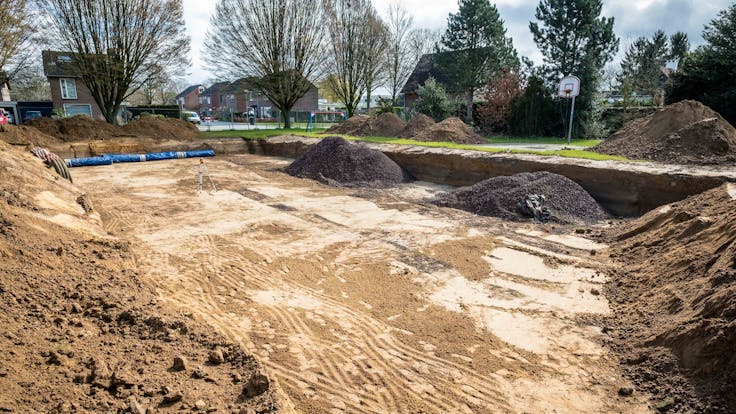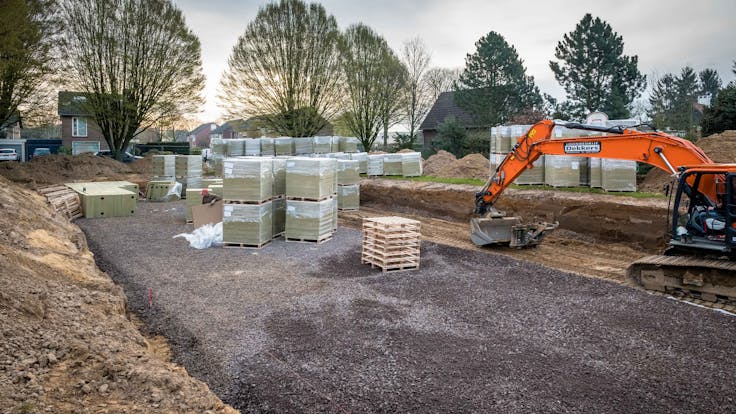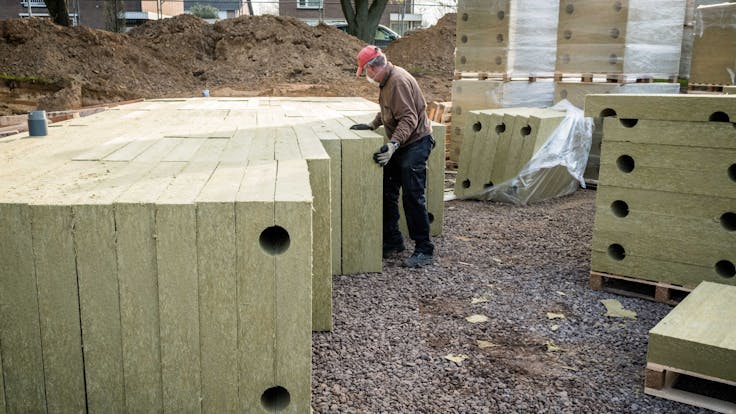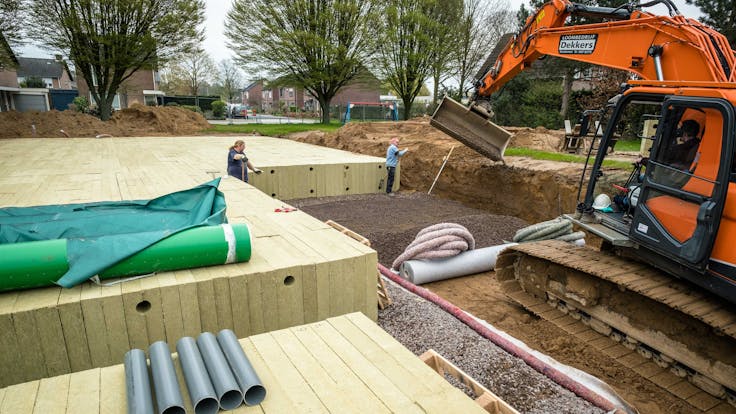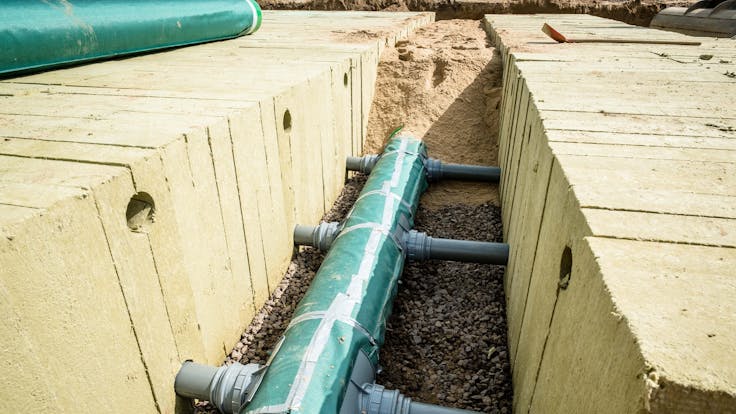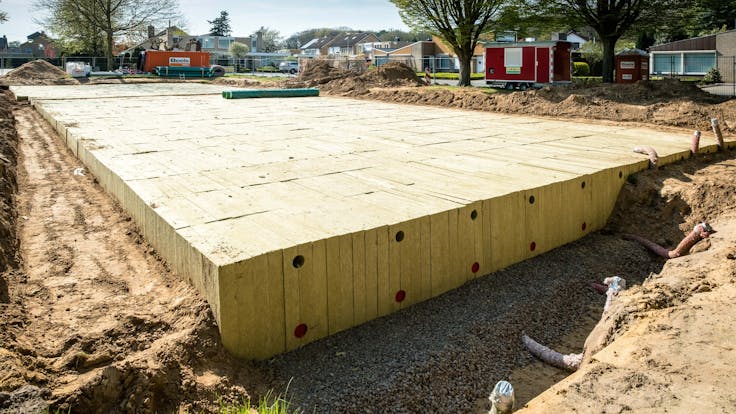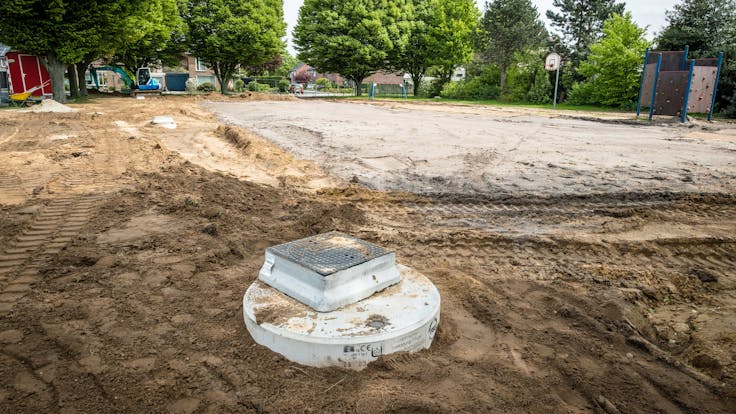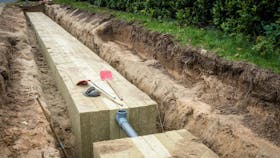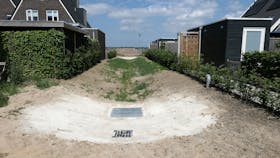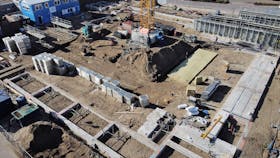In a number of residential properties in the lowest area of the district of Reutsberg in Heel (Maasgouw municipality), waste water rose up via the toilets and streets and gardens became flooded during heavy showers. Enlarging the sewer was not an option and the construction of a rainwater separate rainwater sewer would be too expensive. A pilot project was therefore begun, in which rainwater was diverted and the water ran above ground into swales where it could infiltrate into the soil.
This was a good functional solution, with the exception of one location - a swale on the Boslaan which served as a playing field. The original swale configuration with lava stone in the substrate appeared not to be working as anticipated. The soil into which the collected water had to be infiltrated appeared to be silted up, as a result of which water was not absorbed during wet periods. The playing field was regularly flooded and even had to be sealed off with fencing at certain times for safety reasons. This was an unacceptable situation, all the more because the playing field had been designated as an important social area by the neighbourhood steering group at the start of the project. A solution was therefore required which combined the functions of playing field and water storage in this location.
